Mooring for harsh weather
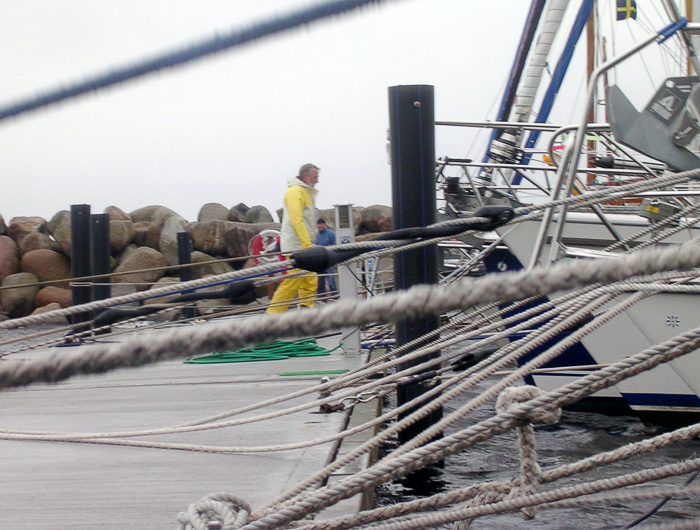
I am often asked about how to secure the boat in a marina when there is a lot of swell or wind coming up. There are very many ways to do it, but I though I’d share some main points I’d like emphasising. Then it’s your call to share your seamanship and develop your way that suites your boat.
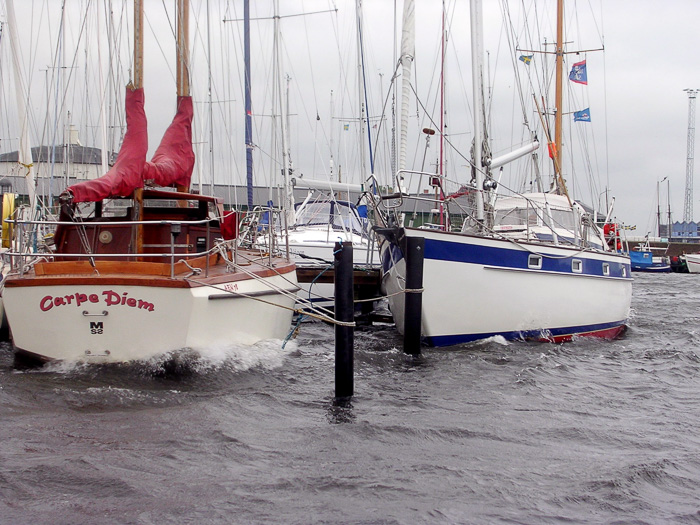
Do it early
If the weather forecast predicts winds and/or swell from a direction that the specific marina you’re in is known to to give an uncomfortable stay, prepare early if you don’t decide to leave for a better marina or anchorage. I have too often thought “it’ll not bee that bad, it’s a marina after all…” and then having to wake up in the middle of the night trying to improve my mooring, wearing only little more than some underpants, if at all. Funnily enough, you often meet your neighbours doing the same in a similar outfit.
Or, what also has happens is that you walk into the nearest chandlery to buy some more shock absorbents, only to find out that they are just all sold out but the smallest size, due to other yachties thinking like yourself wanting to protect their boats.
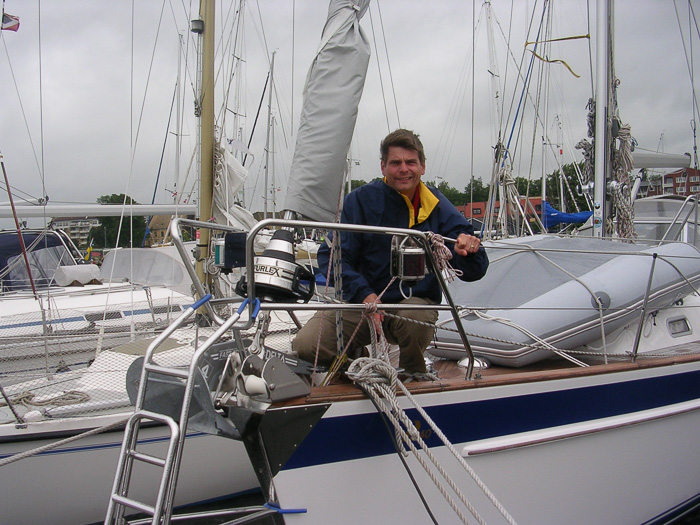
Use your engine and bow-prop!
Instead of pulling in the entire weight of your boat when stretching your mooring lines, use the power there is! If you wish to take in the slack of the fore springs (from the bow of your boat pointing aft ashore) start your engine and put it in reverse first. And if you wish to take in the slack of your aft spring, put your gear into forward. If you have a bow thruster you can do the same to take in the slack of your port or starboard bow lines.
This is better than a bad back!
Shock absorbents
Have enough shock absorbents onboard, such as “Bungy’s” or the original “Forsheda” (also available as copies). The Forsheda cannot be taken off a line easily (if at all), so here you need some dedicated warps and mooring lines with these permanently fitted. If you don’t want to carry around too many long ropes with a Forsheda shock absorbent you seldom use, you can use a shorter rope for these, which then can be prolonged as needed, e.g. by using two bowlines or a Hunter’s bend (see separate video here).

The Bungies are good, since you can fit them onto a line only if needed, even if the rope has already been set. Personally I prefer the black Bungies over the blue “Smart Snubber” that tends to use up the ropes faster by chafing over its sharp edges. The Bungy’s only exist in one size and over time, they break, but I consider them as sacrificial and put 4 on each line when needed.
It goes without saying that only special mooring lines, which are elastic per se, should be used and in now way old halyards or sheets, which are made to have minimal elasticity. Of course, if you use a lot of shock absorbents, you can compensate the non-exist elasticity of sheets and use them in emergency. But it’s not a good idea.
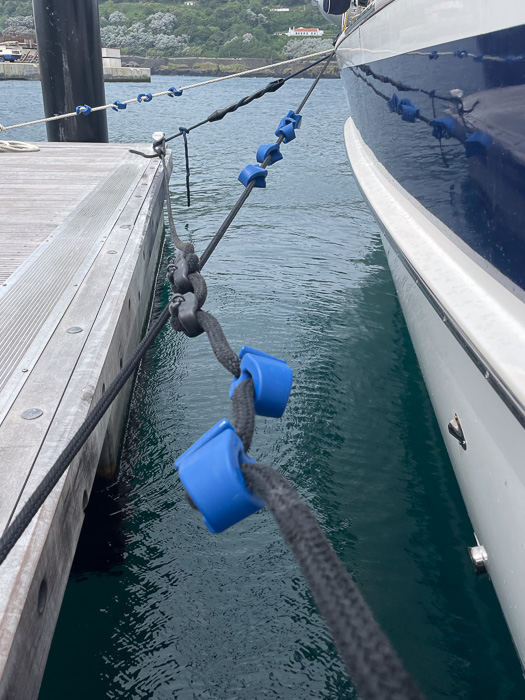
Fenders
It’s really important to use many fenders, to spread the load and also make sure at least some remain if one should pop up or down over or under the pontoon. Remember: oval sausage formed fenders roll forward and aft (or up and down if you hang them horizontally) while round fenders roll in all directions, which can come in handy.
Having fender covers does not only look neat, but they take up sand and other debris and don’t scratch your gelcoat when then turn 180 degrees. They are also quiet, meaning that they don’t squeak, which can be quite annoying. I use high quality fender covers by Fendequip which have a double fabric and with the boat’s name on. This has already paid off, when I was given back a lost fender thanks to the fact that it had my name on it!
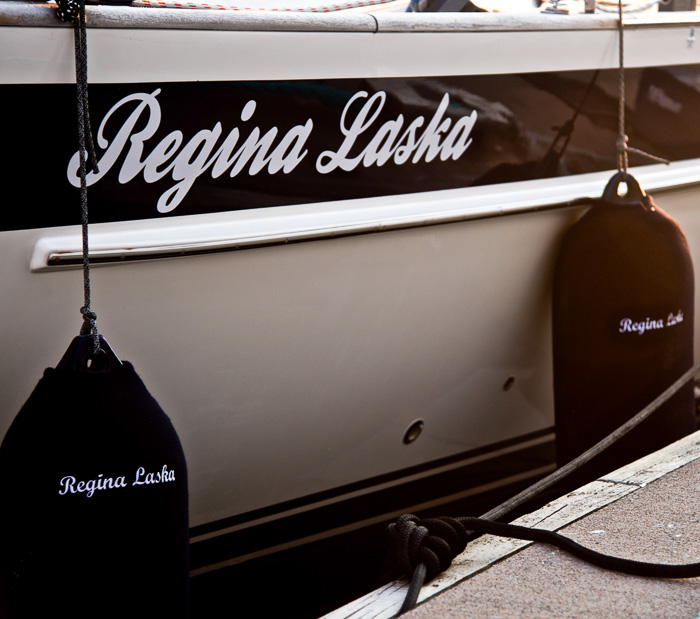
There will be a lot of strain on the lifelines when the fenders are pulled down, so do fit them next to a stanchion and don’t hang them in between stanchions. If you have a gate in the lifeline, keep it closed, so that the force can be lead past and through the gate. Otherwise the opening gate takes the entire load.
To minimise the strain, you can also tie the fenders on the lower end of the stanchions, instead of onto the lifeline.
If fenders tend to pop up or down, it is a good trick to tie the fenders on the pontoon rather on the boat, but don’t forget them when you leave dock!
Double it up and spread the loads!
It’s always a good idea to have a second mooring line doing the same job. This give redundancy, but especially it’s spreading the load. You can, of course, use the same cleats and just add more ropes, but it’s smarter to use several cleats both ashore and on the boat in order to spread the load not only between ropes and shock absorbers but also in between the cleats.
Try to stretch the lines evenly, so two lines doing the same job, such as two forward pointing springs, are stretched approximately in the same pace, so they help each other.
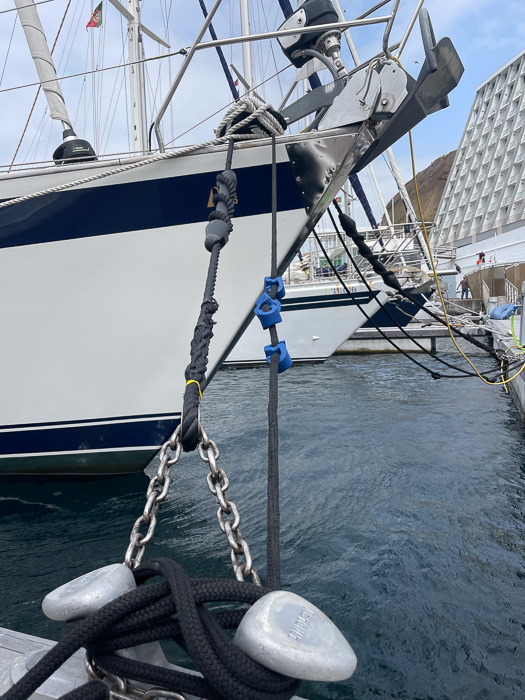
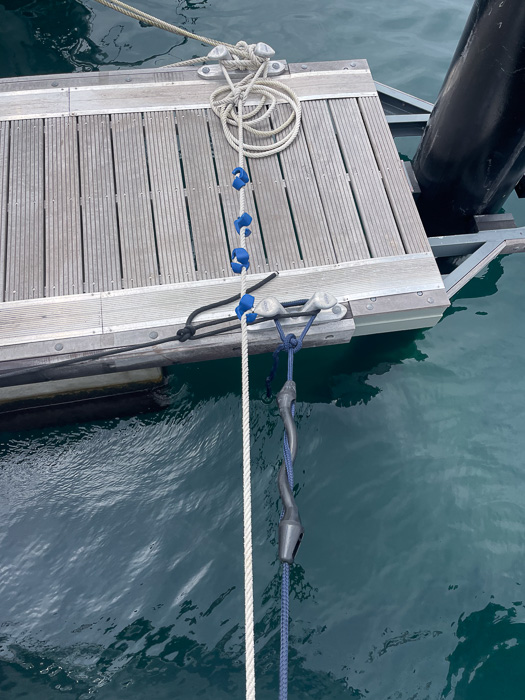
Know your cleats!
Some cleats are stronger than others. This is both valid for the cleats ashore as well as for your own cleats on deck. On some boats, for instance, the mid-ship cleats are only through-bolted with two bolts, the other two bolts go directly into the GRP. And if it they start to leak, it leaks into a cupboard inside the boat. Forward and stern cleats are often through-bolted throughout with big washers underneath. And if these leak, it drips down into your anchor locker or stern locker.
Since force is a function of both mass (= displacement of your boat) as well as acceleration (how fast you stop the boat) shock absorbers help a lot to reduce the force on your cleats: Thanks to the longer breaking way thanks to elasticity, acceleration decreases and with it the force onto your cleats.
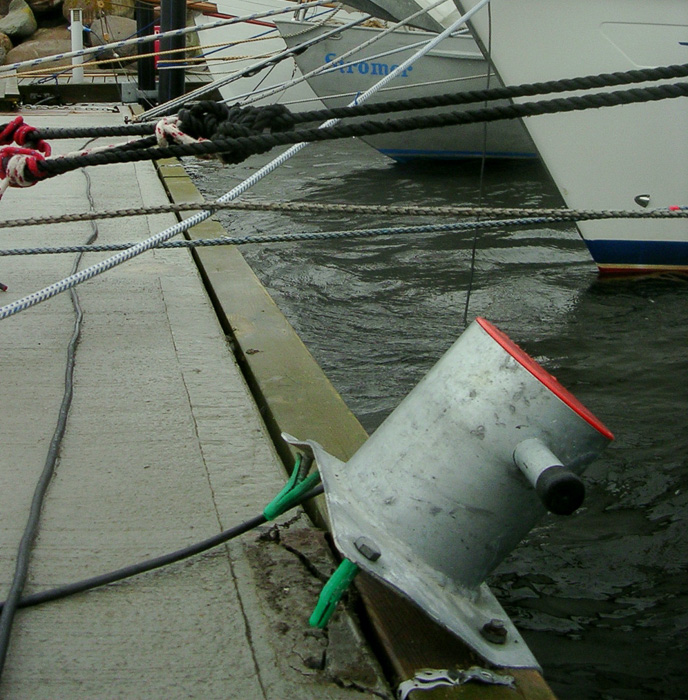
Use your winches!
You can do like the big boys on the big ships: their ropes all end on a winch and they stretch up the lines by just turning the winches.
You can also lead your lines through a cleat or fair lead back to one of your strong winches. This way, the cleat does not take the full load of your rope (the less the mooring line is “bent” through the cleat, the less the force on the cleat). You can easily winch in the rope if you need to and your winches are one of your strongest attachments on your boat.
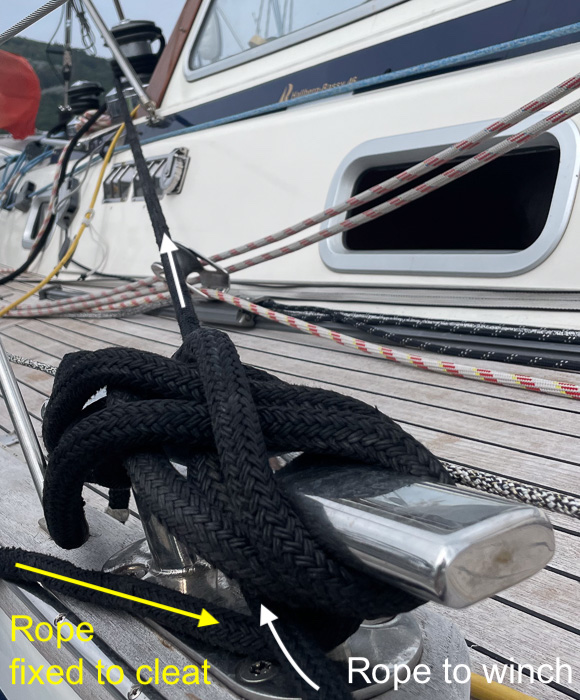
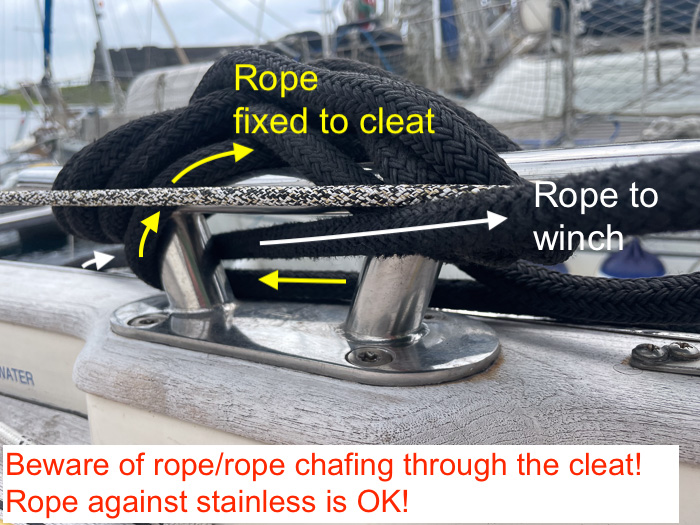
Avoid chafing!
Even if ropes are allowed to rub just the slightest against anything other than smooth surfaces, they are soon destroyed if not cut through. If you need to go around some ugly corners ashore, use an old garden hose or, even better, an old fire fighting hose you could ask for at your local fire brigade which need to replace their hoses from time to time anyway. There are also special anti-chafing devices you roll onto your mooring lines, such as the Spiroll. Just fit it firmly onto your line using a cable tie or some tape.

If you lead a line through a cleat, try to avoid that it touches any other ropes already attached to the cleat, so it can run freely through the middle of the cleat.
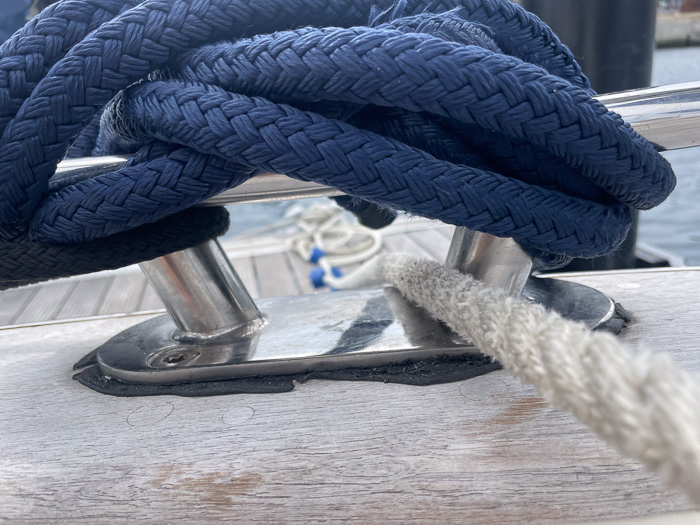
If you use a cleat on the opposite side of your boat to spread the load, you may use a fender to avoid the rope chafing against your deck.
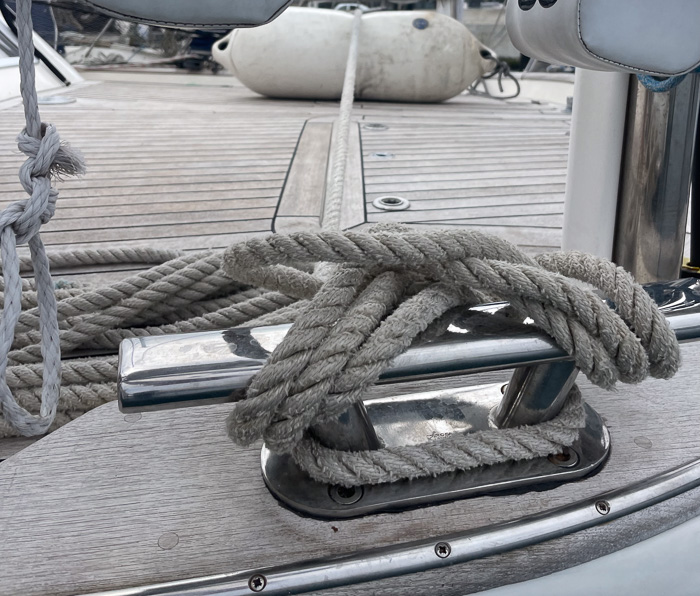
Have a good sleep!
If you can’t sleep because of the sound the movements of the ropes d0, give them some dishwasher detergent as lubrication. This also works well for fenders which lack fender covers. Luckily, if you have good fender covers, they are quiet.
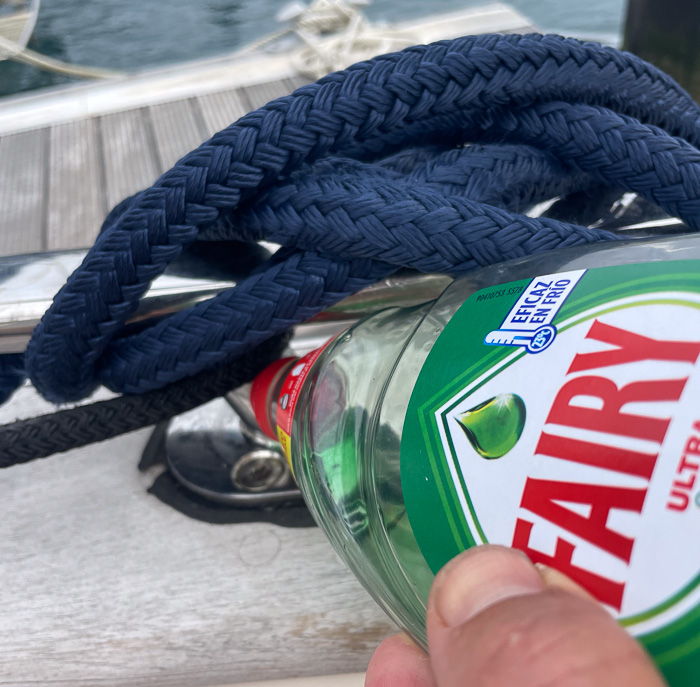
Vertäuung, Festmacher, Anlegen, Taue
